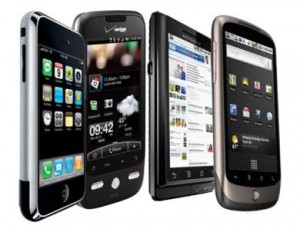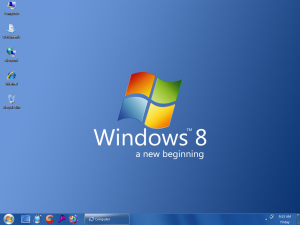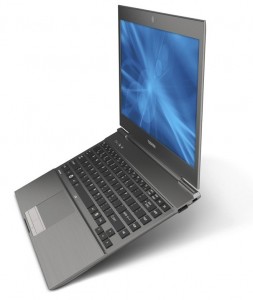 Anything can be communicated via the Internet. It readily connects everyone to emails, web, television, and voice. It is where mobile computing’s future lies. The mobile industry seems to be shifting focus to Everything-Over-IP.
Anything can be communicated via the Internet. It readily connects everyone to emails, web, television, and voice. It is where mobile computing’s future lies. The mobile industry seems to be shifting focus to Everything-Over-IP.
Traditionally, a mobile phone is used to communicate voice conversations. The question now is who needs mobile voice? Texting has becoming a popular way of doing things in Asia and Europe. North America is catching up. Then there’s the popularity of Facebook and Twitter, where Internet connection is required for status updates. It’s becoming more than just a 1-to-1 communication. It’s a broadcast of information.
To make Internet capable mobile devices, first the portable technologies have to converge. Laptops have to be small enough for maximum portability. Cell phones must be powerful enough to run like computers. There are plenty of companies like Apple, Toshiba, Dell, and Nokia who are trying to close that gap.
It’s no surprise Apple announced the iPad. They’re touting it as a reading device, but people know it can be much more. Its main communication devices are WiFi and 3G. No voice capability. However, Apple has also recently allowed VoIP over the 3G network, so apps like Fring or Skype can provide voice calling. Similarly, AT&T now allows Slingbox, TV anywhere, to go over 3G network to iPhone users (eventually the iPad). So Apple’s strategy is definitely IP based communication. Other companies will (or have already) follow suit.
This may sound familiar. In 1998, there was much hype for Voice-Over-IP (VoIP) in the Telecom industry. Huge investments were made to lay down fiber optics infrastructure for faster data transfers. It took a while for that investment to bear fruit, and it looks like the consumers are finally starting to see the benefits.
Interestingly enough, wireless Internet connectivity it not widely available. But that’s changing, thanks to innovation in wireless technology, such as WiMax or LTE. It will reach the rural areas where Internet access is scarce. Also, the price needs to go down in order to make it economically feasible. Maybe the government should step in?
The direction is to get everyone connected. Mobile Internet can finally become an integral part of the way people do business and go about their personal lives. It’s the future of communication – on everyone’s hand.
 Predictions are in already: Windows 8 will be irrelevant. The clues seem to support the suspicion – the masses are already happy with Windows 7. Enterprise already made a substantial investment upgrading to Windows 7. Another migration in 2012 is just too soon.
Predictions are in already: Windows 8 will be irrelevant. The clues seem to support the suspicion – the masses are already happy with Windows 7. Enterprise already made a substantial investment upgrading to Windows 7. Another migration in 2012 is just too soon.
